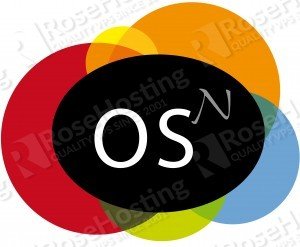
Log in to your server as user root and make sure that all packages are up to date
yum -y update
Novius OS needs a blank SQL database, so we will install MariaDB server
yum install mariadb mariadb-server
Start the MariaDB database server and enable the service at boot time
systemctl start mariadb systemctl enable mariadb
Run the ‘mysql_secure_installation’ post installation script to secure MariaDB and set your MariaDB root password
Log in to the MariaDB server using the ‘root’ user and create new database and user
mysql -u root -p CREATE DATABASE noviusos; CREATE USER 'noviusosuser'@'localhost' IDENTIFIED BY 'PASSWORD'; GRANT ALL PRIVILEGES ON `noviusos`.* TO 'noviusosuser'@'localhost'; FLUSH PRIVILEGES;
Next, we will install Apache web server
yum install httpd
Start the Apache web server and add it to automatically start on the system start-up
systemctl start httpd systemctl enable httpd
Install PHP and few PHP modules
yum install php php-mysql php-common
Change the current working directory to Apache’s document root directory.
cd /var/www/html/
Download and execute Novius OS’s installation script using the following command
wget http://raw.github.com/novius-os/ci/master/dubrovka/tools/install.sh && sh install.sh
You will be prompted to enter an installation directory for Novius OS. If you want to use the default ‘novius-os’ directory just press enter and wait the installation process to complete.
Change the owner of the ‘novius-os’ directory
chown -R apache:apache novius-os/
PHP configuration directive ‘short_open_tag’ must be on in order to run Novius OS, so we need to edit the PHP configuration file. Execute the following command to find the location of the file
php --ini Configuration File (php.ini) Path: /etc Loaded Configuration File: /etc/php.ini Scan for additional .ini files in: /etc/php.d
We need to edit the loaded configuration file. Open the ‘/etc/php.ini’ file and make sure that the ‘short_open_tag’ directive is set to ‘On’.
In order to access Novius OS using your domain name, you need to create Apache virtual host. Create ‘/etc/httpd/conf.d/vhosts.conf’ directory with the following content
vim /etc/httpd/conf.d/vhosts.conf
IncludeOptional vhosts.d/*.conf
Create the virtual host
vim /etc/httpd/vhosts.d/yourdomain.tld.conf ServerAdmin webmaster@yourdomain.tld DocumentRoot "/var/www/html/yourwebsite" ServerName yourdomain.tld ServerAlias www.yourdomain.tld ErrorLog "/var/log/httpd/yourdomain.tld-error_log" CustomLog "/var/log/httpd/yourdomain.tld-access_log" combined <Directory "/var/www/html/yourdomain.tld/"> DirectoryIndex index.html index.php Options FollowSymLinks AllowOverride All Require all granted
and restart Apache for the changes to take effect.
systemctl restart httpd
Open you favourite web browser, navigate to http://yourdomain.tld/ and follow the steps of the setup wizard to complete the installation.
Once everything is completed, execute the following commands
rm /var/www/html/novius-os/public/htdocs/install.php chmod og-w /var/www/html/novius-os/local/config
Of course you don’t have to do any of this if you use one of our Linux VPS Hosting services, in which case you can simply ask our expert Linux admins to install Novius OS for you. They are available 24×7 and will take care of your request immediately.
PS. If you liked this post please share it with your friends on the social networks using the buttons on the left or simply leave a reply below. Thanks.